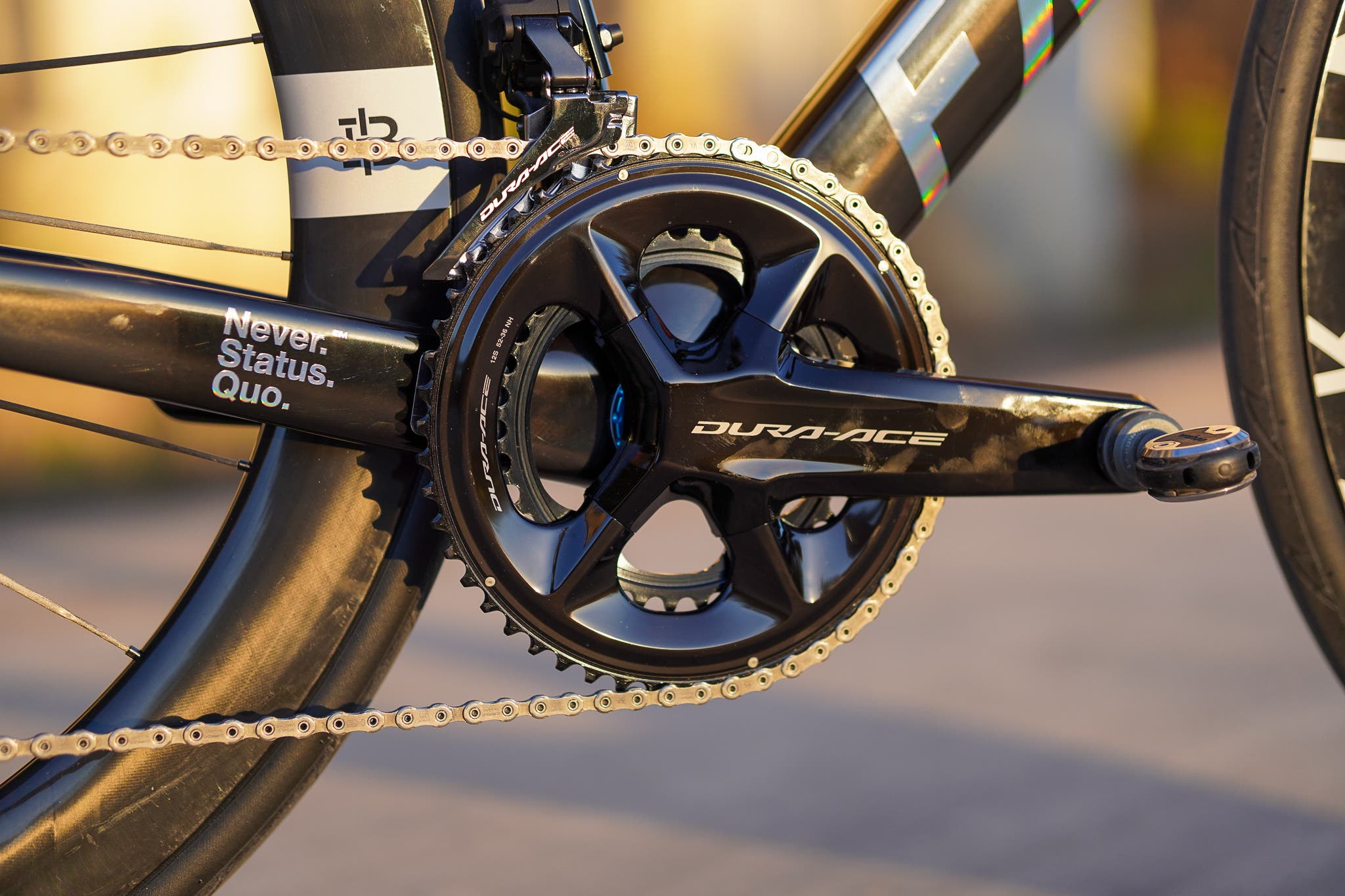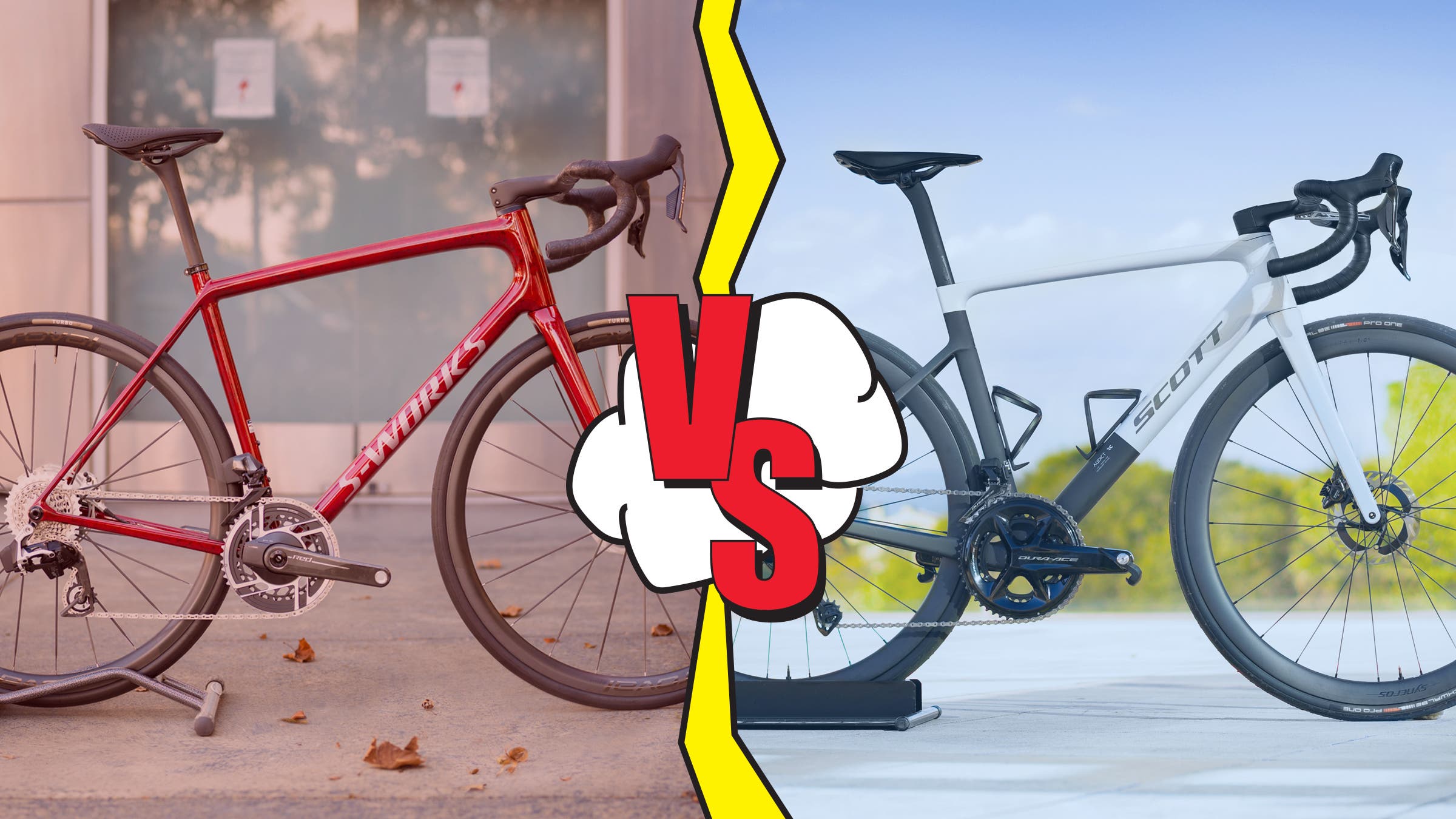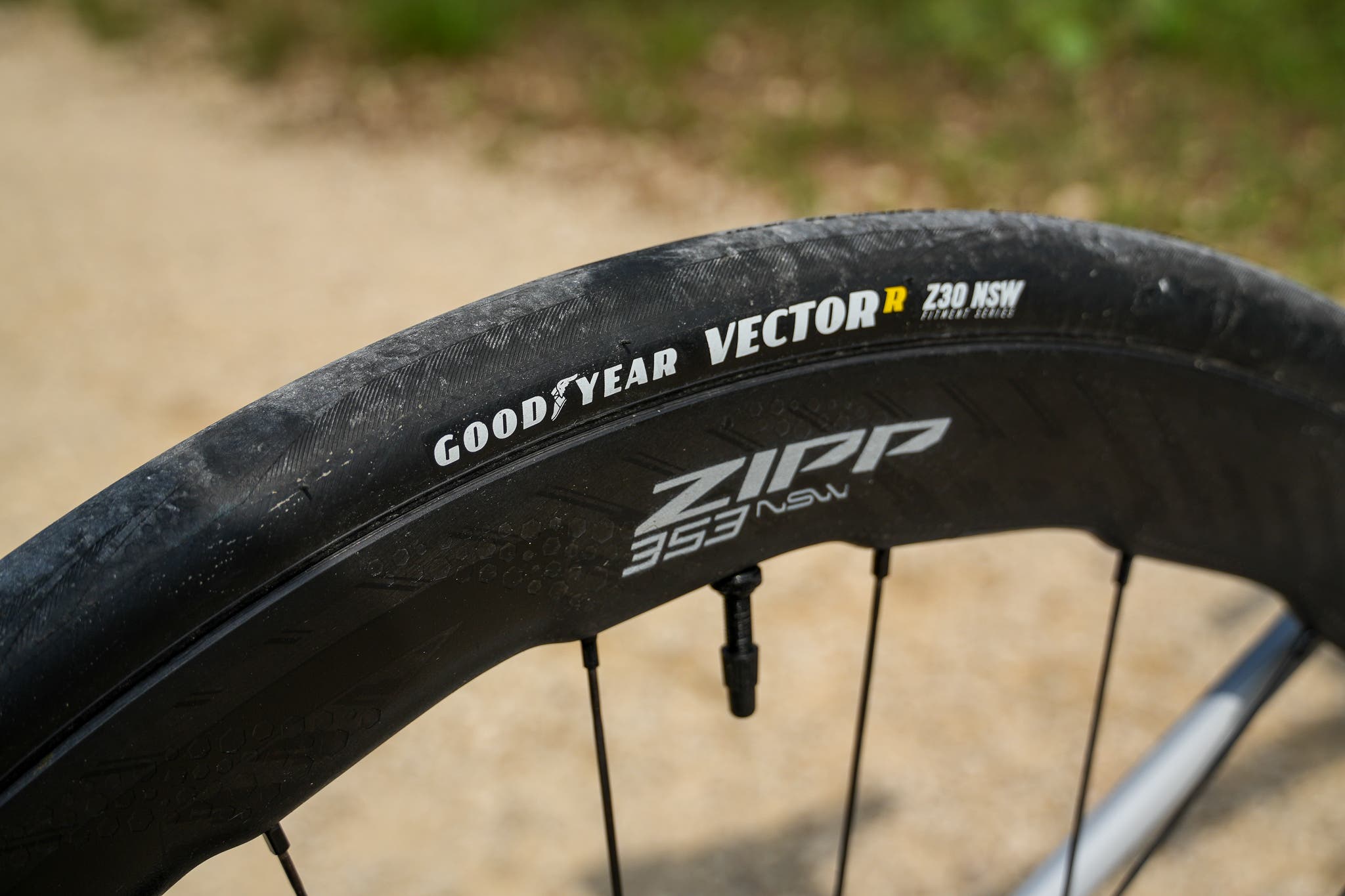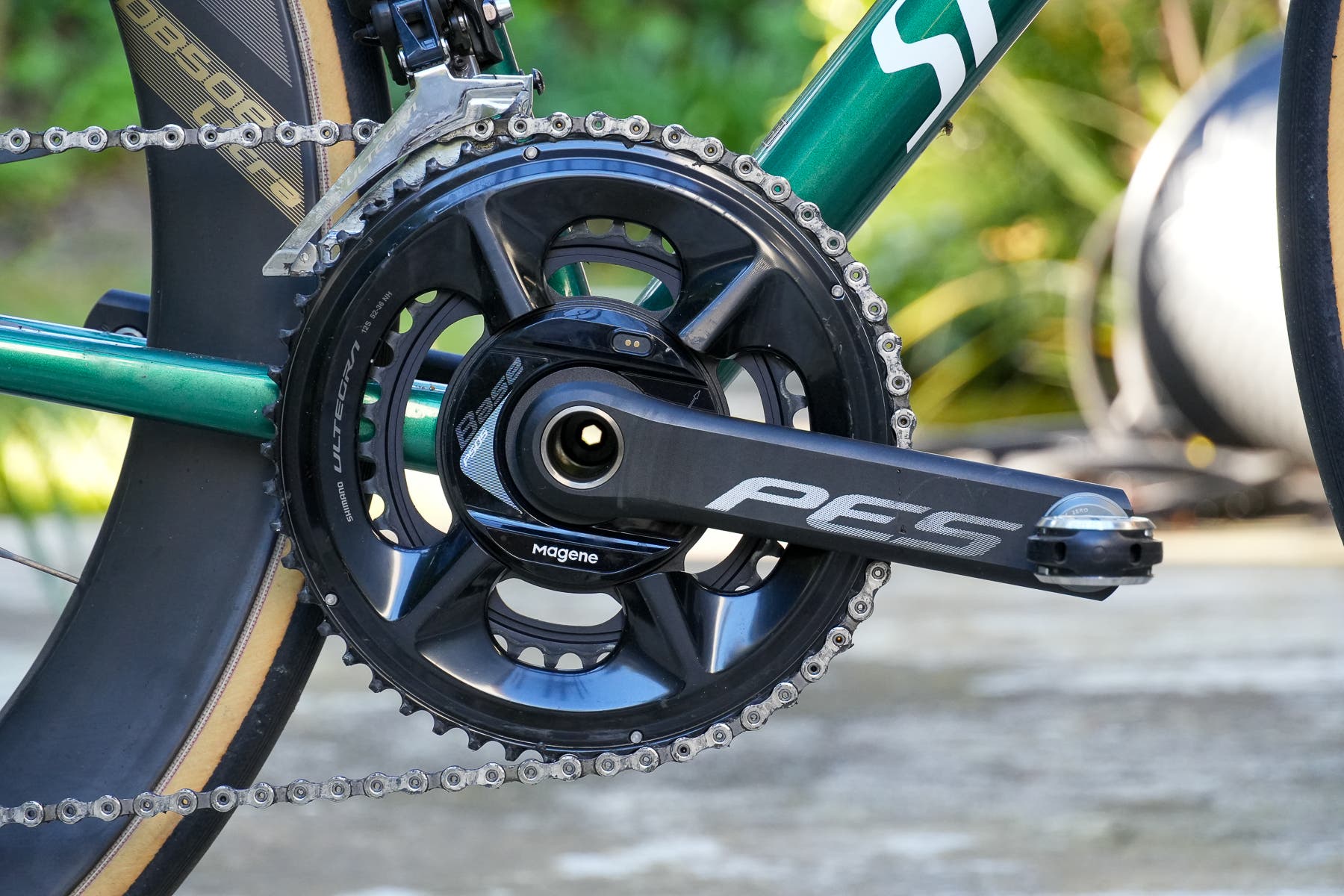Published October 28, 2025 01:35AM
If you’ve been following bike tech closely, you can feel the shifts coming. We certainly can, which is why we’ve put together this list of predictions, hot takes, and trends for bike tech in 2026.
These predictions start with AI features moving from your computer to your local group ride. TPU tubes are going to take over, and so will climbing bikes. Hooked rims will fully take over in 2026, as will a new wireless Shimano 13-speed drivetrain. Oh, and we predict 2026 will be the year that folks really start to embrace the number of spacers they have under their stem. But let us explain!
Without further ado, here’s our road bike predictions for 2026. See our 2025 predictions (most of which came true, I have to mention) over here.
AI is coming for your road bike, or rather, your next group ride
 Don’t look too hard at the reflection, just at the camera right in the middle of the glasses. You’re going to start seeing this way more often next week, or the built-in Meta AI assistant. (Photo: Oakley)
Don’t look too hard at the reflection, just at the camera right in the middle of the glasses. You’re going to start seeing this way more often next week, or the built-in Meta AI assistant. (Photo: Oakley)
First, they introduced derailleurs we had to charge, then they introduced pumps. What’s next, sunglasses we need to charge? Bringing Facebook with you to see your riding data?
Like it or not, I fully predict we’ll see a whole lot more cyclists talking to their glasses than ever before. You can thank the recently launched Oakley-Meta Vanguard for this, as I predict this will be where AI is most prevalent. The Vanguard glasses (as well as the Oakley-Meta HSTN) effectively combine an action camera, external speakers for music, and a high-enough quality set of glasses into one package. That’s appealing enough as it is, but it’s the added AI functionality that’ll feel entirely new.
The added AI lets you control your music playback, send messages, get insight into what you’re physically looking at, and even get some weather insights without having to pull out your phone. I know you didn’t ask for any of this, but when the tech-obsessed rider on the latest bike pulls up saying things mid-ride like, “Hey Meta, start recording,” you’ll know why.
We’ll finally see new Shimano Dura-Ace and Ultegra drivetrains… and they’ll be wireless
 (Photo: Alvin Holbrook/Velo)
(Photo: Alvin Holbrook/Velo)
2026 will be the year we’ll finally see Shimano release updated versions of its Dura-Ace and Ultegra drivetrains. But whereas Shimano has been typically shy with its updates, I’m betting on some big changes coming to this groupset to keep up with SRAM’s wave of popularity, a new-and-improved Campagnolo, and the ever-approaching march of inexpensive Chinese groupsets.
The biggest change I predict is going fully wireless. Trouble is, I’m not quite sure how they’re going to do it. Thorough patent design from SRAM meant that Campagnolo had to use unique front and rear derailleur batteries for its wireless Super Record groupset, and I wouldn’t be surprised if the same thing happens to Shimano. Perhaps the front derailleur could utilize a lower-profile battery to ensure ample tire clearance, but there’s no easy way to execute this.
Will Shimano go 13 speed? I’m skeptical. Shimano historically adds another gear to its drivetrains every other update: Dura-Ace 7800 and 7900 use 10-speed, 9000 and R9100 use 11-speed, R9200 use 12-speed cassettes. Considering we spotted Shimano using a 13-speed cassette in a patent filing earlier this year, however, I wouldn’t be surprised.
Expect to see the popular 11-34t cassette continue, but I anticipate an 11-36t cassette at the Dura-Ace level to join. I wouldn’t be surprised to see pro-centric 10-30t and 10-34t cassettes to give the pros a bigger sprint gear.
Enabling the use of a 10t cog is the use of Shimano’s Microspline freehub, a standard that’s long sat in the wings as the brand’s 1x-specific freehub. We’ll lament the loss of the long-running HG freehub, but considering that Shimano’s used it since the 1990s, I’m willing to forgive Shimano this time around should they make the change (and offer HG-compatible cassettes as well).
I predict chainrings will stay the same, with 50/34t and 52/36t chainrings as the main chainring options. Cranks will likely also remain aluminum rather than carbon fiber, as Shimano has been historically proud of its machining, though I wouldn’t be surprised to see Shimano adopt a direct-mount chainring standard as seen on its mountain bike cranks.
As for the power meter, the oft-discussed weakness of Shimano’s road groupsets? Based on a report from Bikeradar, patent filings show Shimano is working on some sort of pedal-based power meter. I wouldn’t be surprised to see that be its power meter solution for the future.
All of this amounts to substantial updates to Shimano’s top-end groupset, which we’ll call Shimano Dura-Ace R9300. We predict we’ll see Dura-Ace leaks at the start of 2026, with an official launch sometime before the Tour de France, the biggest road race of the year. And while Shimano last launched Ultegra alongside Dura-Ace, I am willing to bet we’d see Ultegra Di2 a month later, just in time for new bike models to hit bike shops with the new groupsets.
I could be totally wrong on this, but I feel confident that we’ll see some sort of movement from Shimano to come.
2026 is the year of the climbing bike, thanks to FEA… or will it?
 Josh has had the luxury of riding both the Specialized Aethos and Scott Addict RC. (Photo: Josh Ross/Velo)
Josh has had the luxury of riding both the Specialized Aethos and Scott Addict RC. (Photo: Josh Ross/Velo)
2025 may have felt like the year of the aero bike, but we’ve seen a surprising number of new lightweight climbing bikes arrive on the market. Could that mean that 2026 will be the year of the climbing bike? It depends on who you ask between Josh and me.
Josh feels that this is the case primarily due to the surge of new climbing bikes that seriously impressed us, including the Specialized Aethos, the Scott Addict RC, and the Cervelo R5, to name a few. Those bikes not only feel fantastic, but they offer an easy-to-test advantage that few bikes offer: low weight. You can objectively feel that low weight in your local bike shop, your mid-ride coffee stop when you invariably lift everyone’s bikes, and when you pedal up a steep climb.
Further, Specialized says part of its ability to make the new Aethos as light as possible was through using FEA to analyze not just strength and stress distribution in a virtual environment, but to see how each carbon layer affected the said stress distribution and strength. As a result, Specialized says it was able to add tire clearance and a taller head tube – both of which require more material – without dramatically changing the weight of a given frame or fork.
What I suspect, however, is that these latest exercises in weight optimization will result in even lighter aero bikes, with the technology also improving all-road/endurance bikes, too. A lighter bike that better distributes loads, who would’ve thought?
You’re going to swap your tubeless setup for a TPU tube
 (Photo: Silca)
(Photo: Silca)
Most folks riding a new road bike either already use tubeless road tires or they’ve heard about them and they’re considering making the switch. 2026, however, will be the year that even tubeless tire die-hards will consider switching to a TPU tube.
TPU tubes offer some of the same benefits of a tubeless road tire setup, particularly when compared to a standard butyl rubber tube. Both tout lower weight, additional puncture resistance, and improved rolling resistance against a standard rubber tube. Tubeless road tires have become much more ubiquitous over the last few years, while the smaller and lighter form factor of a TPU tube means they’ve largely replaced rubber tubes in our saddle bags.
So, why would someone want to swap to a TPU tube? For some, tubeless tires and the sealants required can be a messy, expensive headache, particularly as pressures increase. The latest TPU tubes claim that their TPU tubes are nearly as efficient as tubeless, but way easier to set up. That’s a big win for riders tired of wrestling with tubeless systems.
This isn’t me predicting a mass phase-out of tubeless road tires, as I personally feel that the benefits outweigh the drawbacks for regular cyclists. But I fully anticipate that in 2026, you’ll start to see folks on social media really start talking about how much they love using TPU tubes.
The end of hookless, the year of hooked rims. Welcome to 2026
 (Photo: Alvin Holbrook/Velo)
(Photo: Alvin Holbrook/Velo)
Hookless road rims are going to end in 2025. They won’t totally go away, but I predict we’ll see the biggest road hookless rim proponents move away from them once and for all.
We’ve seen hookless road wheels grow in adoption over the last few years. Their proponents tout the lower weight, increased strength, and lower cost to produce a hookless rim than a hooked rim. And thanks to improved manufacturing tolerances between road tires and rims over the last few years, we’ve seen some level of acceptance.
That said, road hookless acceptance has been far from smooth. Complications at the pro level – and comments from trusted industry members – have only contributed to the public’s general skepticism around hookless. Even Enve moved to a “mini hook” on its latest Enve SES 4.5 Pro wheels.
It might be the most mini of a mini hook I’ve seen. Enve says it’s done to save weight rather than as an additional safety factor, and that new manufacturing processes allow similarly tight tolerances without sacrificing the strength from a hookless rim it previously touted.
Will Enve produce a new set of its SES road wheels with the same mini hook? That remains to be seen, but I wouldn’t be surprised if it eventually makes the change, even with all of its history in promoting and advocating for hookless road wheels.
Regardless of whether that prediction comes true, I suspect we’ll see more road cyclists than ever dismiss the idea of buying a hookless road wheel. Eventually, even the loudest proponents of hookless will need to adapt accordingly.
The pros are gonna learn to love spacers, and so will you
 (Photo: Screenshots via TNT Sports Cycling)
(Photo: Screenshots via TNT Sports Cycling)
Marginal gains have gone too far, I thought as I watched this video that several people sent me. Then I thought to myself: this isn’t just marginal, it’s a huge difference.
And this guy riding in a pro road race with his handlebars to the sky? I regret to inform you all, but I think this is the future of the road bike. Or rather, it’s the future in its most extreme form.
Road bikes won’t actually look like this, and I highly doubt anyone will be able to walk into their local bike shop in the next five to 10 years and buy a bike set up as such. The positioning is just too specific to one type of riding that it casts away positions that make sense for other forms of road racing, not to mention general road riding. Your bike’s carefully designed geometry was designed with your bars in a general area. Moving them dramatically outside of that plane will result in a bike that absolutely won’t handle as its engineers intended.
That said, don’t be surprised if you see other enterprising folks looking for marginal gains to adopt or tinker with their positioning. That includes raising handlebars – and adding spacers under their stems – in an effort to make it more comfortable to ride with forearms parallel to the ground without compromising what might already be a powerful but sustainable riding position.
In a world of marginal gains, narrowing the rider’s frontal area to this degree can be anything but marginal, likely in the tens of watts saved at race speeds. These are massive gains in a place where folks normally quibble over a frame being 2 or 3 watts faster than before, if we’re lucky.
Just don’t expect me to adopt it any time soon.
Short crank lengths are here to stay
 (Photo: Alvin Holbrook/Velo)
(Photo: Alvin Holbrook/Velo)
Our 2025 predictions story had us anticipating folks to use shorter cranks through the year. It ended up being one of the most popular questions (and one of our most-visited stories) of the year.
Tadej Pogačar rode 165 mm length cranks to win after win this year. The data show that a crank length optimized to 41 percent of your tibia length could be your ideal leg length. At the same time, the data show that most riders are able to adapt to different crank lengths. But for the pros, where every bit of margin could make a difference? Finding the right crank length matters.
For mere mortals like us, a shorter crank length may not result in a significant difference in power output, but it can help riders find a hip angle that isn’t as acute at the top of the pedal stroke. And that’s ultimately why more folks will use shorter crank arms on road bikes in 2026: it will likely be more comfortable.
We’re finally starting to see shorter 165 mm cranks make their way to smaller-sized bikes, but we fully anticipate shorter cranks to continue across more models as bike companies work through their inventories.

